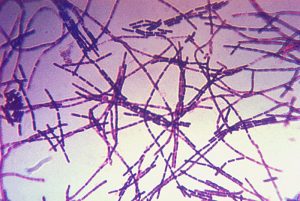NewsDesk @bactiman63
The Philippines Department of Health (DOH) reports confirming human cases of anthrax in Sto. Niño, Cagayan after being exposed to infected dying carabaos — some of which were butchered and consumed as meat, according to a PhilStar report.
This comes on the heels of recent reports of the anthrax deaths of four carabaos, two of which were said to have been sold as meat to residents.
The DOH reiterates that the Anthrax spread in Cagayan should be treated as a “health event” due to exposure to animals and “not connected to any act of terrorism.”
Anthrax is a bacterial pathogen in livestock and wild animals. Ruminants such as bison, cattle, sheep and goats are highly susceptible, and horses can also be infected.
Anthrax is a very serious disease of livestock because it can potentially cause the rapid loss of a large number of animals in a very short time. Affected animals are often found dead with no illness detected.

When conditions become favorable, the spores germinate into colonies of bacteria. An example would be a grazing cow ingests spores that in the cow, germinate, grow spread and eventually kill the animal. Anthrax is caused by the bacterium, Bacillus anthracis. This spore forming bacteria can survive in the environment for decades because of its ability to resist heat, cold, drying, etc. This is usually the infectious stage of anthrax.
Subscribe to Outbreak News TV on YouTube
There are no reports of person-to-person transmission of anthrax. People get anthrax by handling contaminated animal or animal products, consuming undercooked meat of infected animals and more recently, intentional release of spores.
There are three types of human anthrax with differing degrees of seriousness: cutaneous, gastrointestinal and inhalation.
- South Korea reports 1st Naegleria fowleri case in man returning from Thailand
- Venezuela: Histoplasmosis outbreak linked to Las Tejerías avalanche
- Minnesota: Legionnaires’ disease cases reported in Duluth
- Vietnam: Dengue cases top 350,000, 50 leprosy cases reported in 2022
- Invasive group A strep cases up in Denver, CDC issues health advisory
- FDA Approves First-In-Class HIV Treatment Option
- Malaysia reports nearly 150% increase in dengue in 2022

